Picture this: You walk into your living room after a long, draining day. Your eyes scan the room, looking not just for a place to sit, but for a place to land. A place to exhale. That’s what a chair should be. It’s not just furniture; it’s a destination. But so many beautiful rooms I walk into feel… cold. Sterile. They look perfect for a magazine, but they don’t feel like a sanctuary.
The real story isn’t about just picking the right chair. It’s about creating a multi-sensory experience around it. It’s about the way the light falls, the texture under your fingertips, the scent in the air that tells your nervous system it’s time to unwind. Everyone’s so focused on the visual that they’re missing the other four senses. Let’s change that.
Foundational Decor: Selecting & Positioning Your Chairs
Before we even get to the pretty pillows, we have to lay the groundwork. This is about the energy of the piece itself and where it lives in your room. Get this right, and everything else feels effortless.
1. Choose the Right Chair Style to Match Your Room’s Feeling
People always talk about matching a chair’s “aesthetic,” but I think about it as matching a chair’s “feeling.” Does your room want to feel open and clear, or cozy and held? A Mid-Century Modern chair with its clean lines and simple wood frame creates a sense of mental clarity. But a big, soft, overstuffed armchair with rounded arms feels like a warm hug, an invitation to curl up and let go. It’s less about the design era and more about the emotional resonance of its shape.

When I was first starting out, I put a very architectural, angular chair in a client’s soft, bohemian-style reading nook because it was a “designer” piece. It looked amazing in photos, but she never sat in it. It felt wrong. It broke the spell of the room. A chair’s style is its body language. Make sure it’s speaking the same language as the rest of your space, one that says “come, rest here.”
This is about tuning into the room’s energy and finding a form that supports it, not just one that looks good on its own.
2. Optimize Chair Placement for Connection and Flow
Where you put a chair dictates the flow of energy in a room. We’ve all been in living rooms where the chairs are pushed up against the walls like they’re waiting for a school dance to start. It creates a vast, empty void in the middle and forces you to shout across the room. It’s not just awkward; it’s unsettling on a primal level. We humans are wired for connection, and that means being close enough to talk comfortably.

There’s a science to this called proxemics. The sweet spot for conversation is between four and seven feet. Any further and the connection feels strained. So, pull your chairs away from the walls. Face them toward each other or the sofa to create little islands of intimacy. Think about creating pathways that feel like a gentle, meandering stream, not a rigid hallway. Taping the footprint on the floor first is a great shortcut to avoid the back-breaking work of moving heavy furniture a dozen times. Trust me, your body will thank you.
Good placement isn’t about just having clear paths to walk; it’s about creating an unspoken invitation to connect.
3. Balance Scale and Proportion with Other Living Room Furniture
This sounds like a fussy design rule, but it’s deeply sensory. If a chair is too big for a room, it can feel oppressive, like it’s sucking all the air out. If it’s too small, it can feel lost and lonely, making the space feel cavernous and empty. When the scale is right, there’s a sense of visual calm. Nothing is shouting for attention. It just feels… right.

Let your biggest piece of furniture, usually the sofa, be the anchor. The chairs around it should feel like supportive friends, not rivals or timid wallflowers. Their seat heights and depths should be similar enough that if you’re sitting in one, you feel like you’re on the same level as the person on the sofa. It’s an unspoken part of making conversation feel easy and balanced. When the proportions are off, it creates a subtle sense of disharmony that we can feel, even if we can’t name it.
It’s that feeling of quiet equilibrium that lets your nervous system relax.
4. Understand Upholstery Fabric for Durability and Sensation
Okay, this is where it gets really good. Fabric is everything. It’s the first thing your body makes contact with. It’s a purely tactile experience that we often choose with our eyes. Don’t do that. Think with your fingertips. Imagine the cool, breathable slide of linen on a warm day, or the plush, enveloping softness of velvet on a chilly evening. The rugged, grounding feel of worn leather tells a story. Each one sends a different signal to your brain.
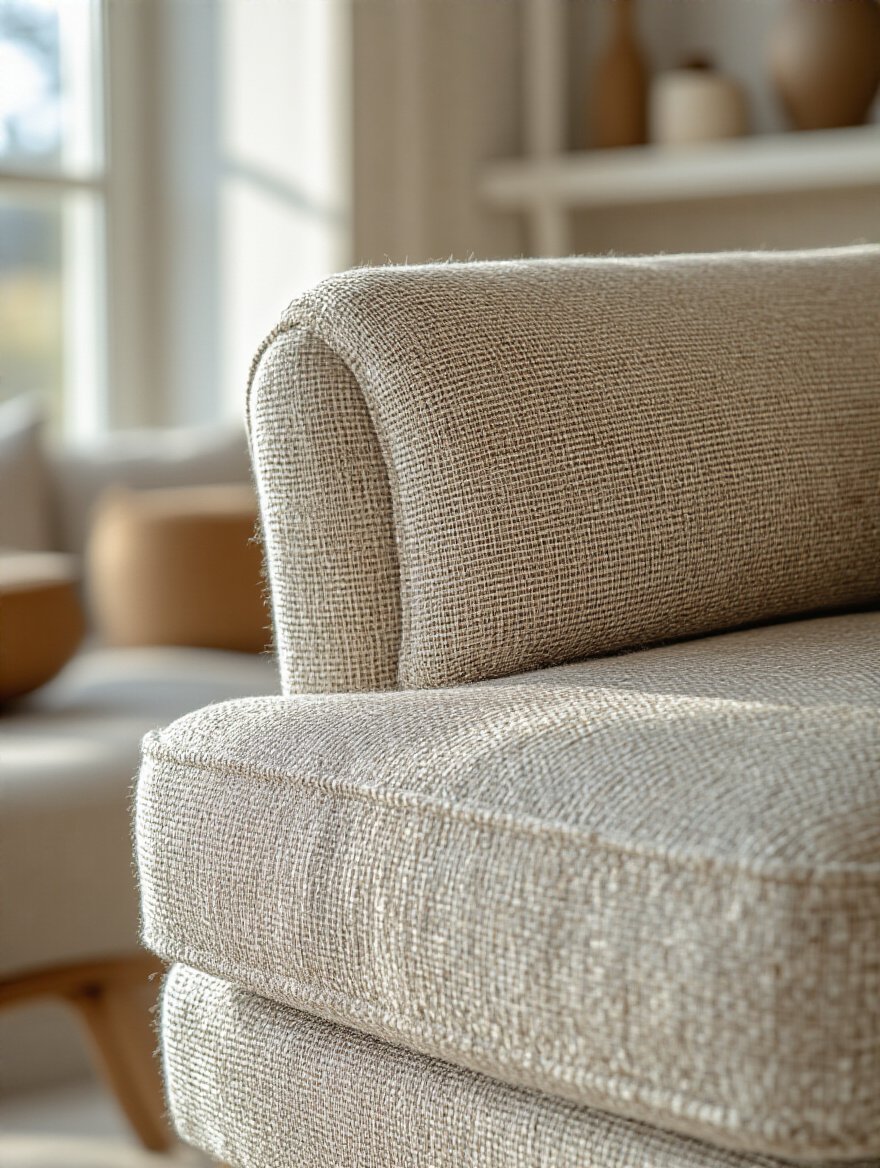
So many people default to “durable” synthetics that feel like plastic and hold static electricity. But you don’t have to sacrifice beauty for brawn anymore. Performance fabrics have come a long way. But my confession? I will almost always champion natural fibers. They breathe. They have a life to them. A tightly woven wool or a high-quality cotton blend can be incredibly resilient. A chair should be a piece of furniture you can truly live in, not a museum piece you’re afraid to touch.
Think about the feeling you want to have when you sit down. Is it cozy? Grounded? Refreshing? Choose the fabric that delivers that sensation.
5. Incorporate a Pop of Color or Texture through a Bold Chair
Color is pure energy. It has a scientifically proven effect on our mood. A pop of sunny yellow isn’t just a design choice; it’s a dose of optimism. A deep, saturated sapphire blue can be profoundly calming and centering. When you bring in a chair with a bold color, you’re not just creating a focal point; you’re injecting a specific emotional frequency into the room.
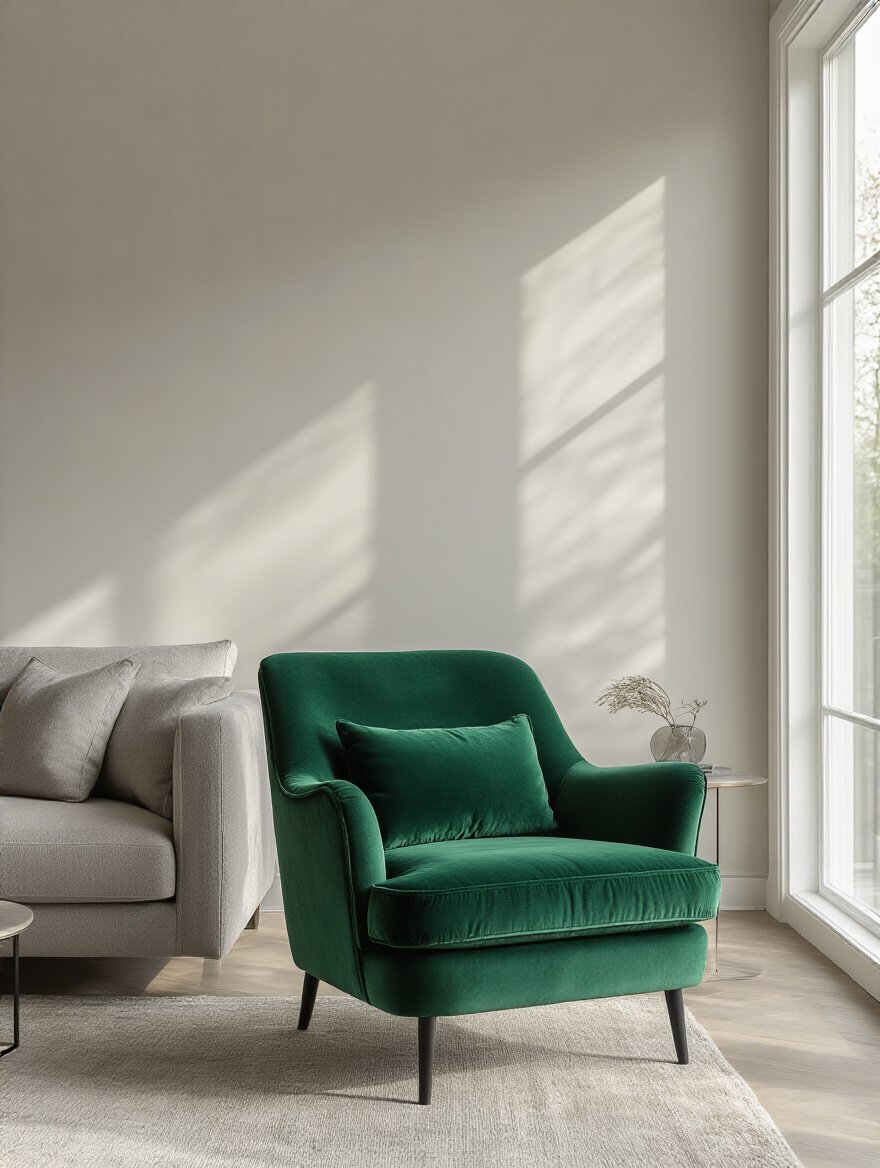
But don’t forget texture, which is color’s quieter but equally powerful sibling. A chair upholstered in a chunky, nubby boucle in a simple cream color can have more sensory impact than a flat, brightly-colored one. Why? Because it begs to be touched. It adds a layer of richness and reality that our senses crave. In a world of flat screens, our bodies are starving for texture. It makes a space feel real, warm, and human.
This isn’t about being trendy. It’s about intentionally choosing the energy—whether through color or texture—that you want your sanctuary to hold.
Chair Enhancements: Materials, Style & Intrinsic Details
Now for the little secrets—the details that take a chair from simply a piece of furniture to a personal statement. This is where you infuse soul.
6. Upgrade Chair Legs or Bases for a Modern or Classic Touch
This might seem like such a small thing, but changing the legs on a chair can completely alter its personality. Think about it in terms of energy. Thick, blocky legs feel solid and grounded. They anchor the chair to the earth. Slender, tapered legs give it a feeling of lightness and lift, as if it’s floating. Metal legs can feel cool and modern, while turned wood legs feel traditional and warm.

I once found a perfectly comfortable but dreadfully boring armchair at a thrift store. It had clunky, dated square legs. For less than fifty dollars, I ordered a set of slim, walnut-colored tapered legs online. In ten minutes, the chair went from frumpy to sophisticated. It wasn’t just a visual trick; it changed the way the chair felt in the room—lighter, more graceful.
This is one of the best shortcuts to making a basic piece feel custom and intentional, shifting its energy to better match your own.
7. Consider Architectural Details like Tufting or Channel Stitching for Elegance
This is another ode to texture. Tufting and channel stitching aren’t just for looks; they create a landscape on the surface of the chair. Your hand can trace the lines. The little dips and valleys of tufting create shadows and highlights that give the chair a beautiful depth, making it feel more substantial and luxurious. It’s a visual rhythm that’s deeply satisfying.
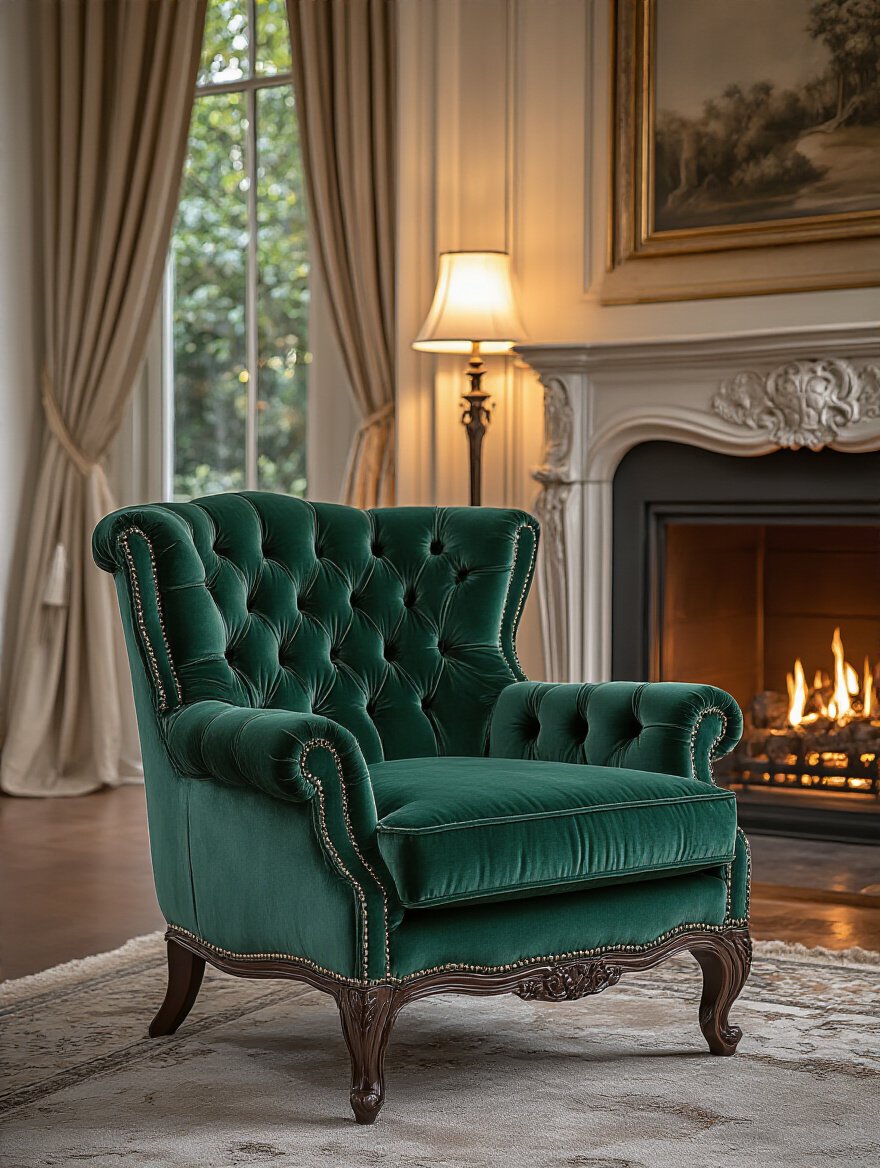
Channel stitching, with its clean, repeating lines, brings a sense of order and calm. It also changes how the chair feels against your back, creating a subtle, supportive contour. These details are a mark of craftsmanship. They tell a story of care and attention. In a world of mass-produced flatness, these textural details feel like a quiet luxury, a reward for anyone who takes the time to look closely and to touch.
It’s about choosing details that feel good to the eye and the hand.
8. Refurbish Older Chairs with a Fresh Stain or Paint Finish
There is a soul in old furniture that you just can’t buy new. The process of refurbishing a chair is an act of care—both for the object and for yourself. The mindful work of sanding down an old finish, feeling the smooth grain of the wood emerge, is a meditative practice. The scent of a natural oil stain as it soaks into the wood is so much more satisfying than the chemical smell of a factory finish.
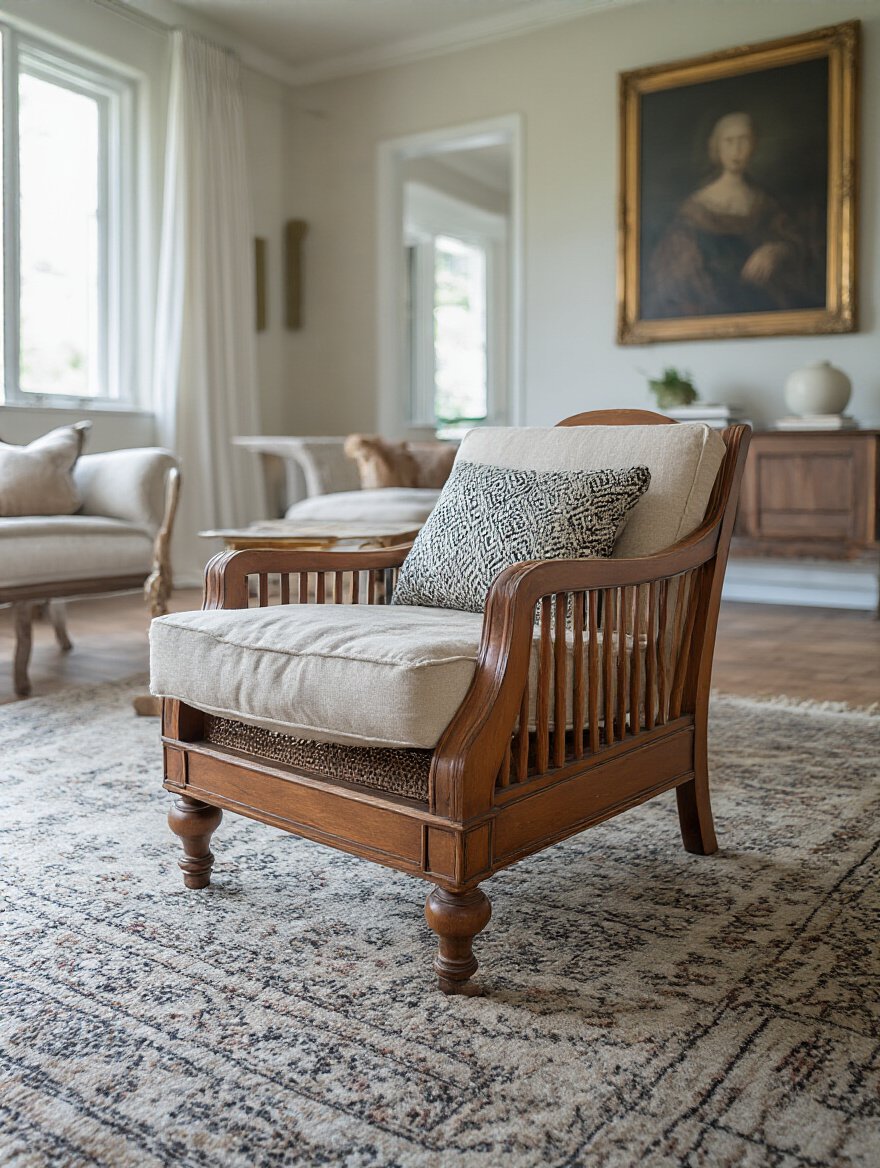
Painting a chair is a chance to give it a completely new energy. I once helped a client transform a set of dark, heavy-looking dining chairs by painting them a soft, misty sage green. It was like they could finally breathe. The entire room felt lighter and happier. You’re not just changing the color; you’re changing the story of the piece, weaving it into the new story of your home.
This is the ultimate sustainable practice. You’re saving a piece from the landfill and creating something that is uniquely yours. The energy of that care becomes part of the chair itself.
9. Explore Sustainable and Unique Materials for Eco-Friendly Decor Statements
Creating a sanctuary at home means ensuring it’s a healthy space for your body and the planet. This goes beyond just aesthetics. Using materials like FSC-certified wood, organic cotton, linen, hemp, or rattan connects your indoor space to the natural world. These materials bring a subtle, organic energy into your home. Think of the faint, sweet smell of a wicker chair or the cool, dry feel of natural linen.

These materials are often less processed and free from the volatile organic compounds (VOCs) that off-gas from synthetic furniture and fabrics. Breathing clean air is a cornerstone of a wellness-focused home. I once designed a sunroom for a client with high sensory sensitivity, and we used a beautiful armchair made of woven water hyacinth. Its natural texture and earthy scent instantly made the space feel calm and grounded.
Choosing sustainable materials isn’t about deprivation; it’s about choosing materials that are alive and will contribute to the health and vitality of your personal ecosystem.
Accessorizing Savvy: Adding Comfort and Personality
This is the final, intimate layer. It’s how you make the chair truly yours, a place that nurtures you personally.
10. Select Themed Throw Pillows to Introduce Personality and Comfort
Pillows are not just decoration. They are a direct interface with your body. A good pillow provides lumbar support that allows your spine to relax. The fill is also critical. A down-filled pillow has a soft, yielding “squish,” while a firm foam or kapok-filled pillow offers more solid support. It’s worth investing in high-quality inserts; they’re the difference between a pillow that supports you and one that just lies there looking sad.
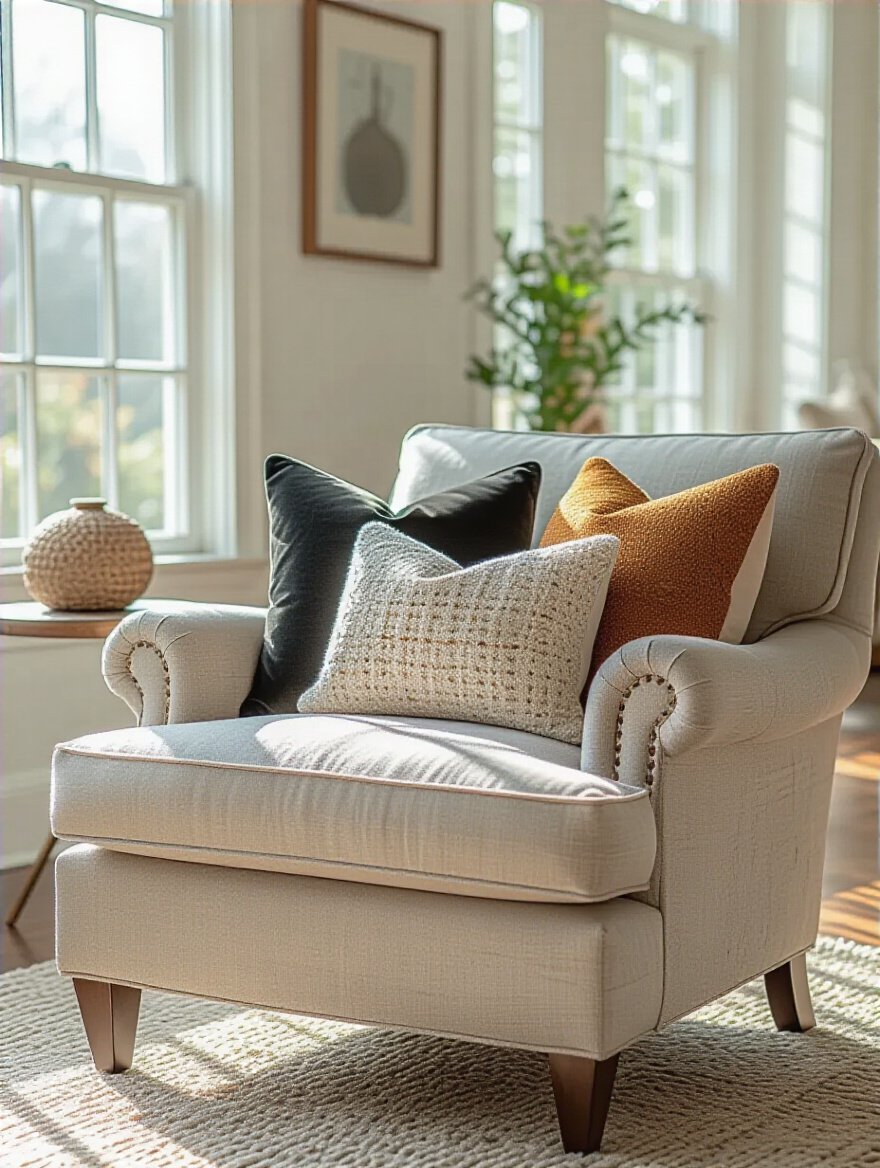
Then there’s the tactile experience of the cover. A silk pillow feels cool and luxurious. A chunky wool knit feels cozy and rustic. A smooth linen feels crisp and clean. Instead of buying a matching set, think about curating a small collection of textures that feel good to you. Mixing them up creates a little sensory playground right in your chair. I tell my clients to close their eyes and just feel the different fabrics. Your body knows which one it needs.
Forget “themes.” This is about curating a tactile toolkit for your own comfort.
11. Drape a Stylish Blanket or Throw for Added Warmth and Texture
A throw blanket is an invitation to get cozy. It’s a promise of comfort. But the secret power of a throw is its weight. There’s a reason weighted blankets are so popular for anxiety; the gentle pressure is profoundly calming to the nervous system. A heavy, chunky wool or cotton knit throw can provide a similar grounding effect. Casually draping one over your chair isn’t just a style move; it’s putting a tool for self-soothing right within reach.

The texture is also key. A soft, fluffy fleece or faux fur throw is pure comfort. A breathable linen or cotton waffle-weave is perfect for when you just want a light layer. And the act of wrapping yourself in it is a deeply nurturing gesture. I always have a soft, weighty throw on my own reading chair. Just seeing it there at the end of the day signals to my brain that it’s time to soften and rest.
A throw is the easiest way to add a layer of immediate, accessible comfort to any chair.
12. Utilize Side Tables or C-Tables for Practicality and Visual Balance
A chair without a small table next to it is an incomplete thought. Where do you put your cup of tea, your book, your reading glasses, your essential oil diffuser? A side table turns a chair into a self-contained world, a personal nest where everything you need for relaxation is within arm’s reach. The sheer practicality of it removes a layer of friction from your life, making it easier to actually use the chair for rest.

C-tables, the ones that slide right over the seat, are a game-changer. They bring the surface to you, creating the perfect little desk for journaling or a perch for your morning coffee. The act of creating this little “comfort zone” grounds the chair and makes it feel more intentional. It’s a small piece of architecture that says, “This spot is designed for your nourishment.”
It’s about designing for effortless ease, making relaxation the path of least resistance.
13. Incorporate Small Area Rugs to Define Chair Zones and Add Warmth
Placing a small rug under a chair or a pair of chairs is like drawing a magic circle. It instantly defines the space as a special zone, separate from the hustle and bustle of the rest of the room. Energetically, it anchors the seating area. But the sensory benefits are even better. Stepping onto a soft, plush rug with bare feet is a profoundly grounding experience. It’s a shift in texture that signals a shift in purpose.

A rug also changes the acoustics of a space. It absorbs sound, making your little nook feel quieter and more intimate. Think of the difference between a library with carpets and one with hard floors. That feeling of hush and calm is what a rug can bring to your chair’s zone. A thick wool or faux sheepskin rug adds a layer of literal and visual warmth that makes the whole corner feel cozier.
This isn’t about covering your floor; it’s about creating a soft foundation for your personal sanctuary.
14. Personalize with Artistic Details: A Book, Sculpture, or Trinket
The objects we surround ourselves with should be more than just “decor.” They should be totems—small things that hold personal meaning, memories, or aspirations. Placing a few curated items on the side table next to your chair turns it into a little altar to your own life. It could be a smooth stone you found on a meaningful walk, a small sculpture that makes you smile, or a stack of books with spines that remind you of worlds you love.
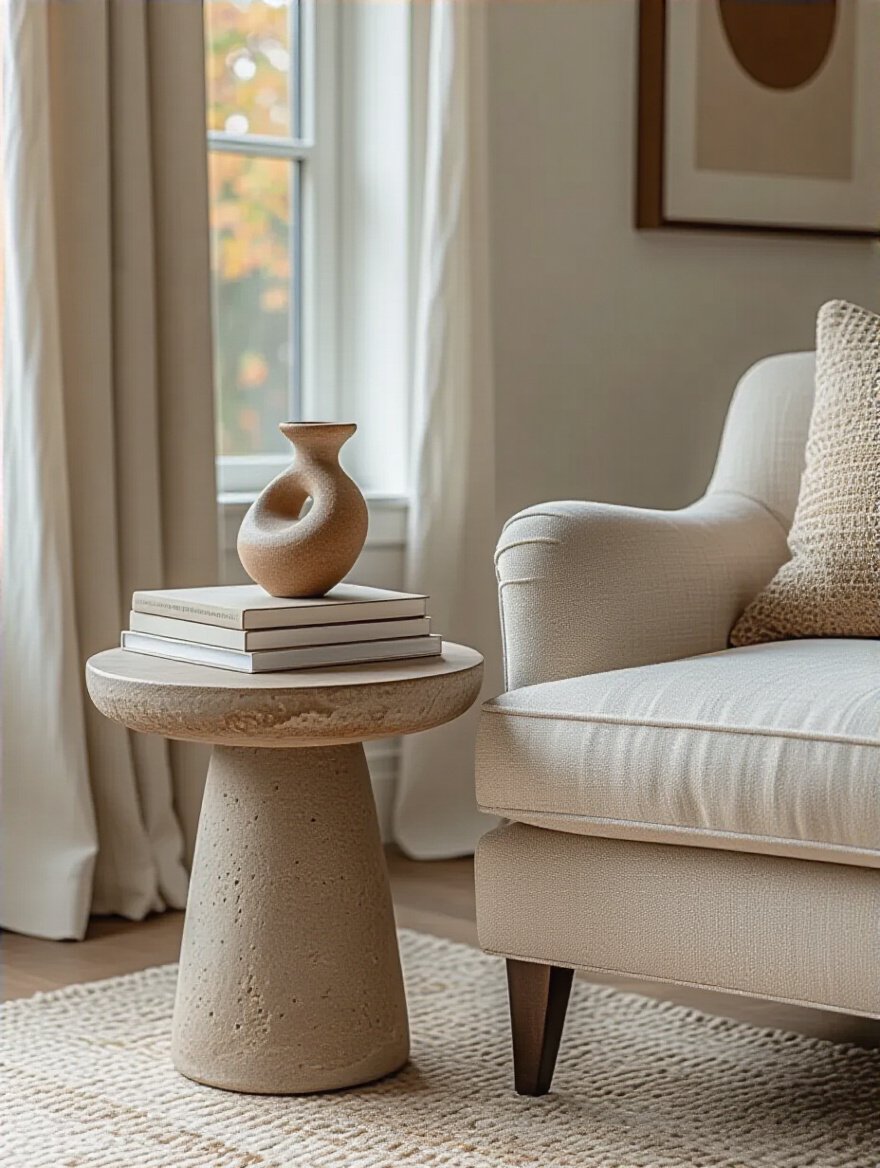
When I was going through a tough time, I kept a small, heavy piece of rose quartz on the table by my favorite chair. Just holding its smooth, cool weight in my hand was incredibly grounding. These aren’t just things; they are anchors for our attention and our emotions. They are the small details that connect our outer environment to our inner world.
Choose objects that feel good in your hand and that bring a good feeling to your heart. That’s the only rule.
Harmonious Integration: Blending Chairs into Your Room’s Design
Finally, let’s zoom out and weave your perfectly curated chair-nook into the fabric of the entire room, creating a seamless, holistic space.
15. Enhance Ambience with Thoughtful Task and Accent Lighting Nearby
Light is arguably the most powerful sensory input we have. It dictates our mood and our energy levels more than almost anything else. The single, harsh overhead light in most living rooms is a wellness crime. To make a chair feel like a true sanctuary, you need layered lighting. This means having a dedicated lamp for your chair nook.
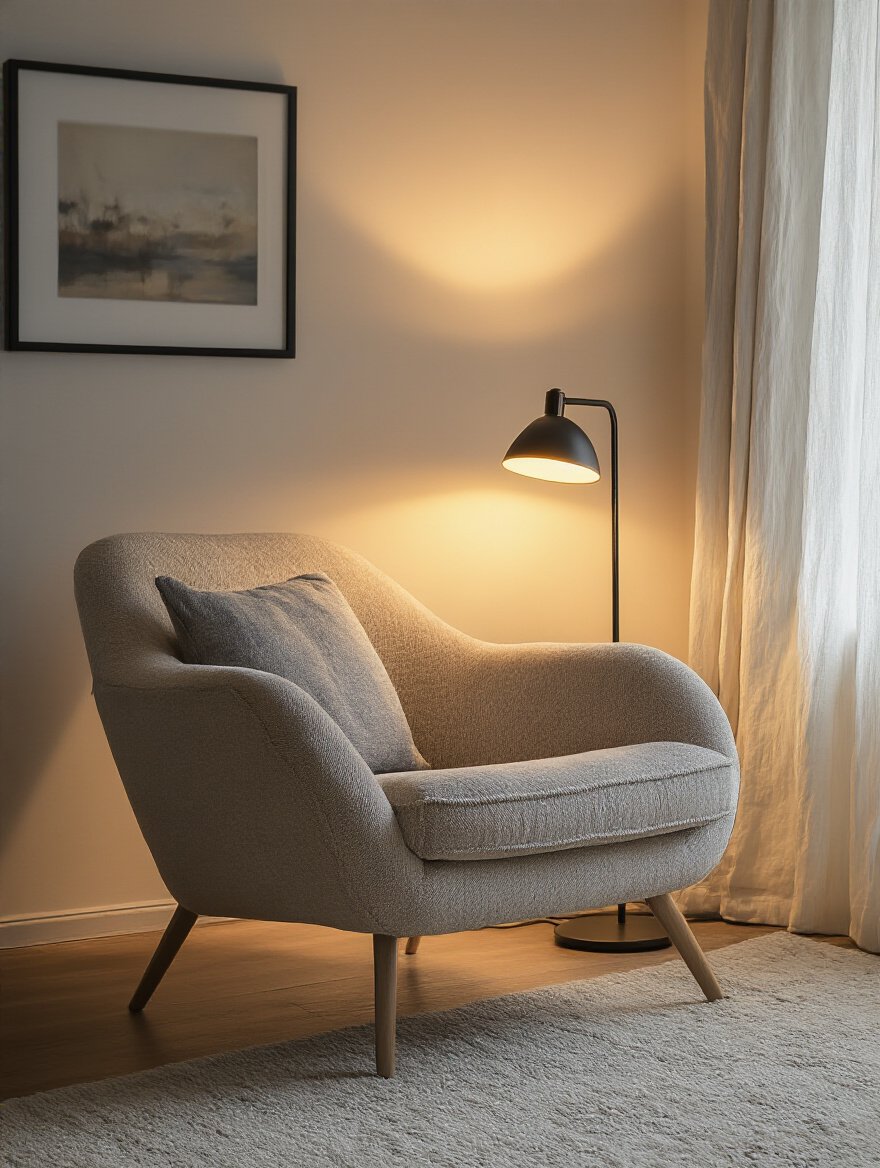
A good reading lamp should provide clear, focused light (task lighting) without creating glare. But equally important is the quality of the light. A bulb with a warm temperature (around 2700K) mimics the gentle glow of firelight or sunset and is deeply calming to our nervous system. And putting it on a dimmer is non-negotiable. It allows you to tailor the light to your mood—brighter for reading, softer for quiet contemplation.
Lighting carves out space and shapes emotion. A pool of warm light around your chair is a visual cue to the rest of the world, and to your own brain, that this is a space for peace.
16. Create a Cohesive Color Palette That Unites All Seating Areas
A cohesive color palette is like a soothing balm for the eyes. When the colors in a room are harmonious, your brain doesn’t have to work as hard to process the space. It creates a sense of peace and order, which is the foundation of a relaxing environment. This doesn’t mean everything has to be beige. It means the colors need to speak to each other in a calm, respectful tone.
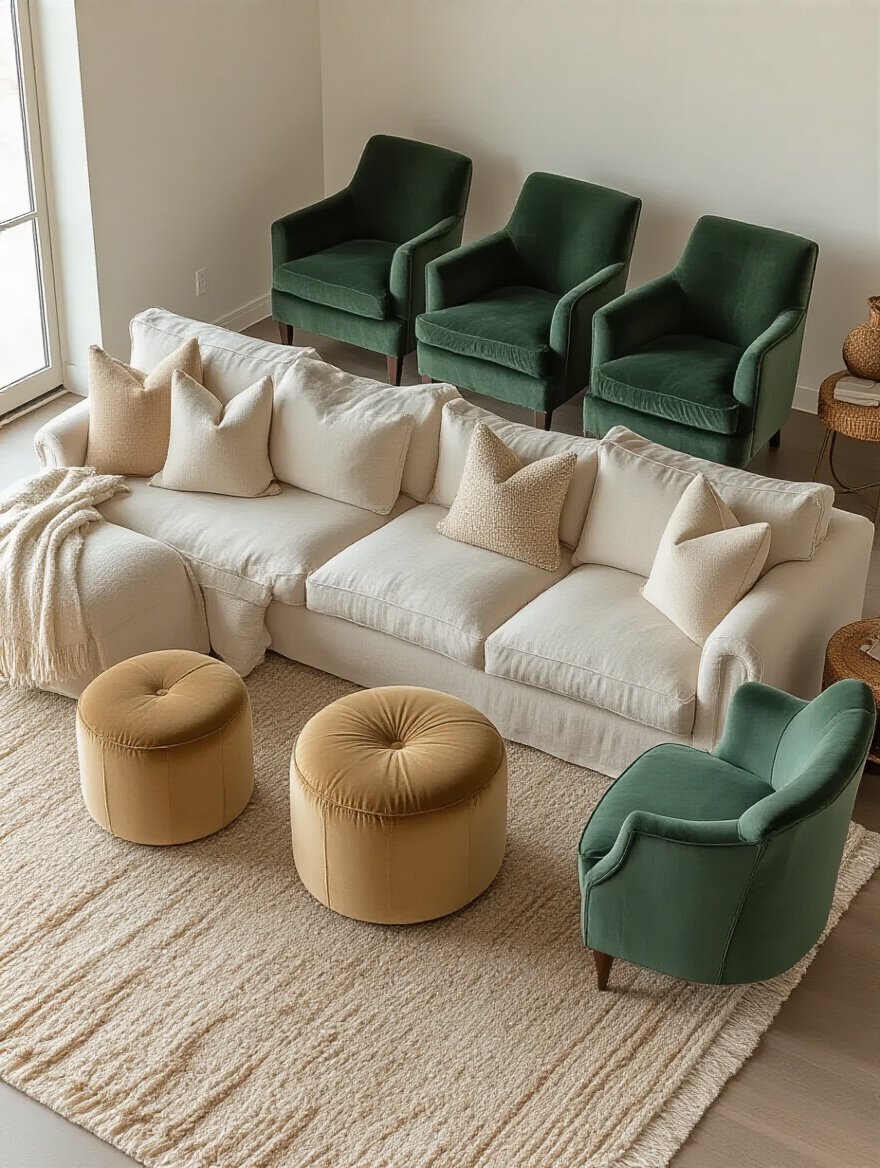
A simple way to think about this is the 60-30-10 rule. Let 60% of your room be a dominant, calming neutral (like the walls and sofa). Let 30% be a secondary color (maybe your accent chairs and some pillows). Then use just 10% for a “pop” of a more vibrant accent color on a small pillow or a piece of art. The key is to repeat these colors in small ways across the different seating areas to tie them all together.
This visual unity is what makes a room feel resolved and whole, allowing your mind to rest.
17. Design a Visual Pathway to Connect Chairs to Other Furniture Groupings
A well-designed room feels like it’s holding you in a gentle embrace, guiding you effortlessly through the space. You create this feeling with “visual pathways.” These are invisible lines that connect your furniture groupings. A large area rug that sits under the front legs of both your sofa and your accent chairs is a powerful way to create this connection. It’s like a bridge between the two zones.
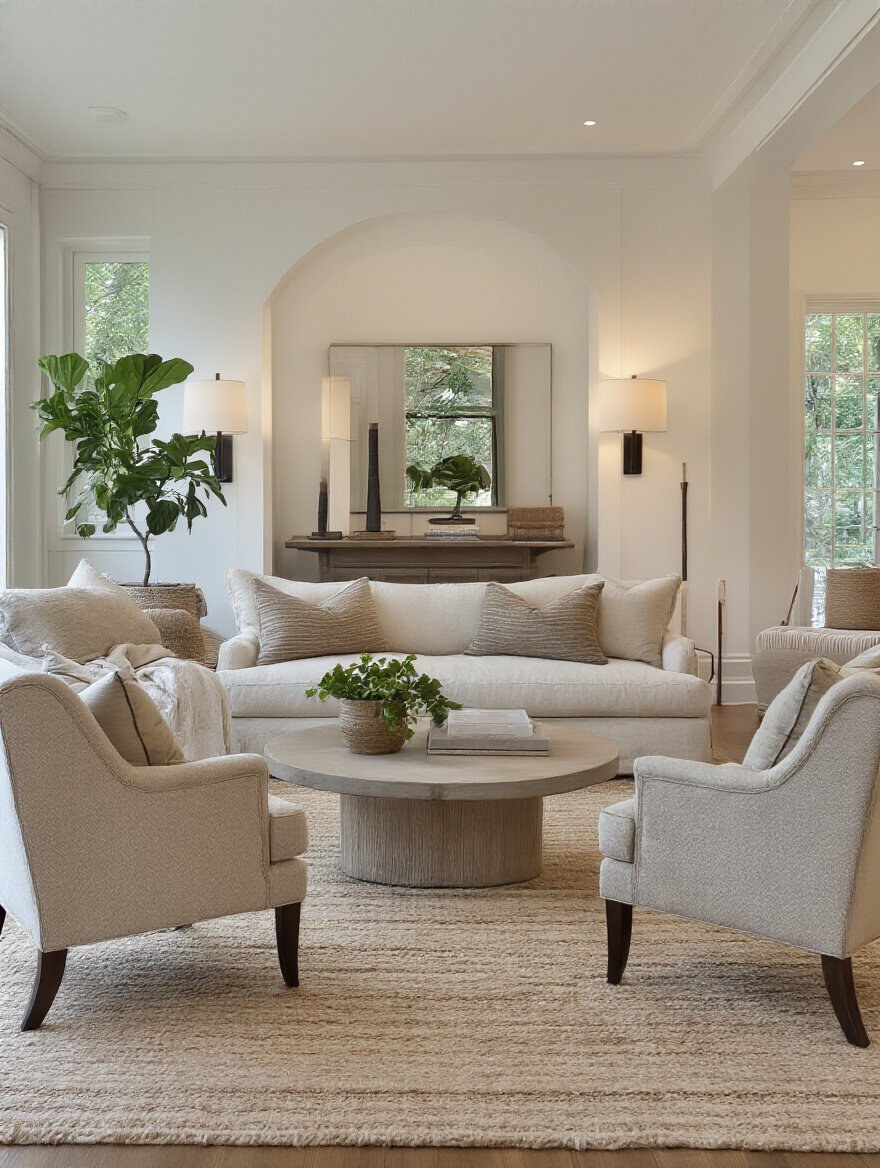
You can also create pathways with repetition. Maybe the brass on your reading lamp echoes the brass on a picture frame above the sofa. Or the deep blue of a throw pillow on an armchair is picked up in the pattern of the area rug. These subtle connections create a sense of flow and cohesion. Your eye moves easily from one point to the next, and the whole room feels like one unified, inviting composition.
It’s the invisible architecture that makes a room feel both expansive and intimate at the same time.
18. Use wall art or Mirrors Strategically Above or Beside Your Chair
The wall around your chair isn’t just a wall; it’s the backdrop to your sanctuary. Hanging a piece of art that you love above or beside your chair gives your mind a beautiful place to wander. It completes the “vignette,” making the chair and its surroundings feel like a purposeful and complete little world. Make sure to hang it at the right height—not so high that it feels disconnected from the chair.
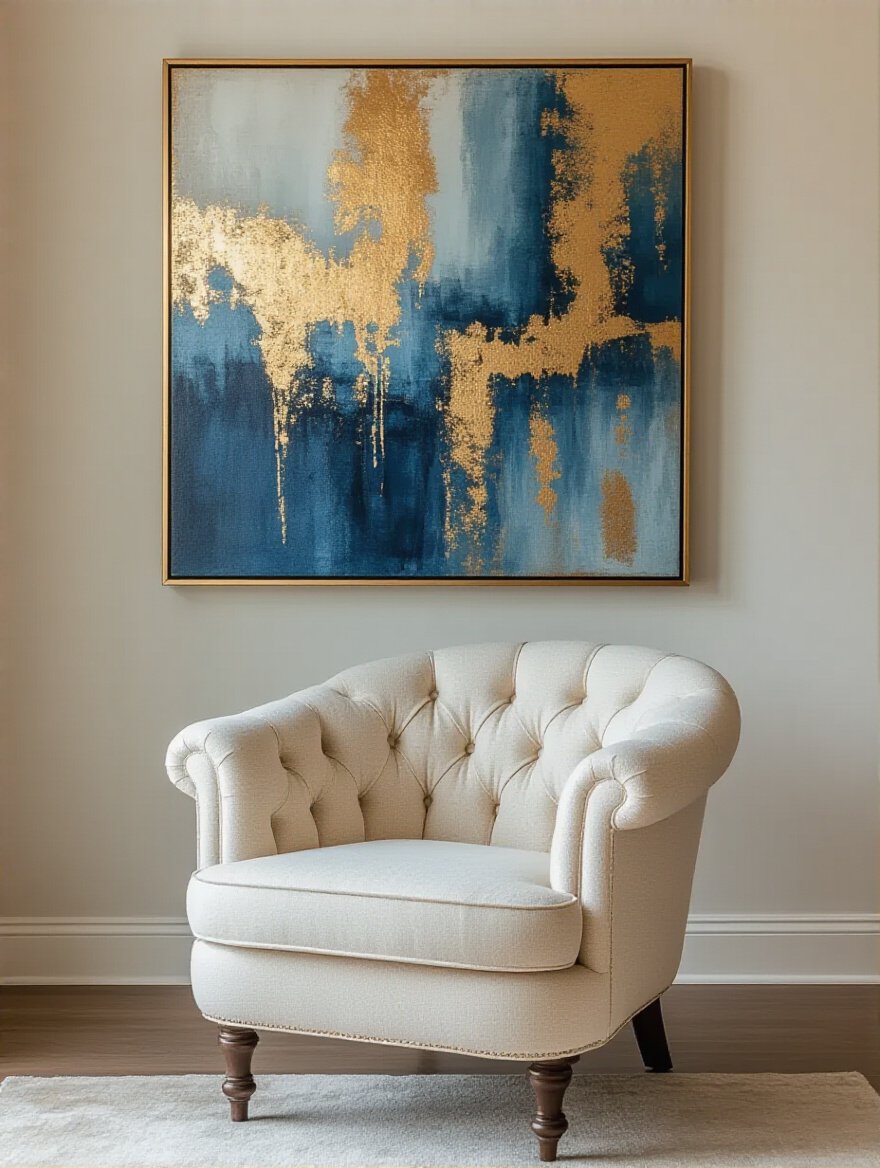
A mirror is a magical tool. It can capture the light from a window and bounce it into your corner, making it feel brighter and more alive. It can also reflect a beautiful view from another part of the room, like a lush green plant or a flickering candle, essentially giving you a second window. It expands the sense of space and adds a layer of depth and shimmer.
This final touch is about giving your personal nook a view—whether it’s into a piece of art or a reflection of the beauty already in your home.
Conclusion
As you can see, making a chair a place of true comfort is an art and a science, but most of all, it’s an act of deep self-care. It’s about listening to what your senses are telling you. It’s about understanding that the weight of a blanket, the feel of linen, the glow of a warm light, and the presence of a beloved object are not just “decor.” They are powerful tools that can shape your mood, calm your nervous system, and make your home a true haven.
So I invite you to stop looking at your living room chairs as just things to sit on. See them as potential sanctuaries. Start with one small change. Add a soft throw. Find a lamp with a warm bulb. Place a single, beautiful object on a table beside it. Trust your own senses. You are the ultimate expert on what will make you feel nurtured and at peace. Go create a space that doesn’t just look beautiful, but feels like a deep, satisfying exhale.






